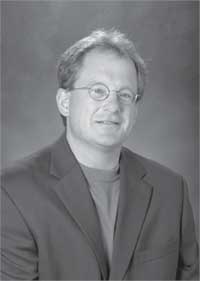President’s message — July 2006

Many of you may be wondering what the role of the AASV is regarding PRRS eradication. This is a very important question, so please let me outline some thoughts that have been generated following discussion with the AASV Executive Committee, Board of Directors, and the PRRS committee. However, I realize that as AASV president, I speak for you and represent your organization. I must be careful with my words and actions so as not to embarrass you or do harm to our reputation. I must always keep in mind that this is a long-term goal and that all the information we need is not yet available. Finally, I know that we cannot do this alone. While the AASV can provide some early leadership and vision, we must garner producer support and find that "producer champion" for PRRS eradication.
So what is the role of the AASV when it comes to advancing the industry to the long-term goal of PRRS eradication? To me, there are four important roles we can play.
We can be leaders. As we have done so far, we have "drawn the line in the sand" with our position statement, saying that we cannot tolerate status quo where PRRS is involved. As leaders, we can also propose a potential timeline to start the discussion. If you were at the AASV meeting, you may have heard about our 20-year eradication plan. If the goal can be accomplished sooner than later, GREAT! However, this is a statement signifying that a rushed, irrational program lacking in science will not go forward with our name on it.
We can be scientists. Thanks to PRRS Collaborative Agricultural Project and the NPB Initiative, the research is well-positioned to bring us answers. I am confident that in the next 1 to 2 years, we will experience research breakthroughs, particularly in PRRSV area spread and biosecurity, proving that we truly understand the routes of transmission and can effectively keep animals free of infection despite being housed near infected pigs. However, this is only one area where we need help. We need more information on PRRSV aerobiology, persistent infection, immunology, viral pathogenesis, vaccinology, diagnostics, and genetic resistance. Scientists must work together to bring us this information and remember that lack of collaboration will cripple the industry.
We can be team builders. The AASV board recently developed a plan for a North American PRRS Eradication Task Force (PETF). This group will be organized by the PRRS committee and will involve regional representation from producers and practitioners from Canada, the United States, and Mexico, along with scientists and industry. The goal of the PETF is to provide a mechanism for enhancing unification of industry stakeholders in an effort to provide a plan for the long-term goal, eradicating PRRS from North America.
Some potential objectives of the PETF:
- Raise awareness that eradication of PRRS from North America is the long-term goal.
- Facilitate communication of ongoing PRRS-eradication efforts.
- Identify and organize PRRS-eradication working groups.
- Develop educational programs and materials.
- Write collaborative proposals for funding PRRS-eradication projects.
- Develop the long-range plan for PRRS eradication from North America and assist in its implementation and oversight.
This type of collaborative model is a great way to enhance communication and to keep everyone informed of what’s happening in regard to PRRS eradication. Many thanks to Dr Monte McCaw and the AASV PRRS committee for leading this effort. We must also thank the Ontario Association of Swine Veterinarians for advancing this concept. They deserve a great deal of credit for their efforts.
We can be educators. The AASV cannot do this alone. We must develop producer support. Therefore, we must educate producers that this is a deliberate, well thought-out plan. During 2006, the AASV Executive Committee will attempt to maximize contact time with producers, communicate the message, and build support. One tremendous advantage we possess is the excellent relationship we have with NPB, thanks to Drs Paul Sundberg and Pam Zaabel. The AASV will be working closely with them.
In closing, we need your help. Each of you has an important voice in this process and we want to hear what you think. Please contact any of the members of the executive committee, the PRRS committee, or your respective representatives on the board of directors and state your opinion. This is your organization and we will never forget it. Thank you for your confidence. We will not disappoint you.
–Scott Dee